
‘Cool Clay’ Explores a Playful Medium
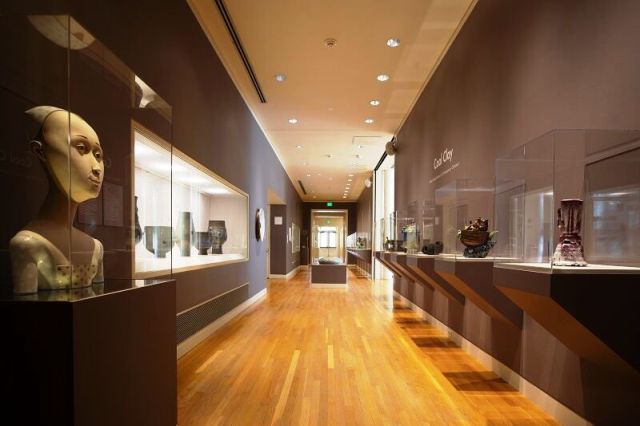 |
|
|
It doesn’t pay to be prudish about clay.
That’s the lesson one high-minded observer, a guy who loves the simplicity and even austerity of modernism, took away after a visit to Sacramento's Crocker Art Museum’s charming ‘Cool Clay’ exhibit and a chat with its curator, Christie Hajela.
The artist Peter Shire, who was born in 1948 and grew up in a mid-century modern home, must have reached the same conclusion. His 'Paralellogram Teapot,' from 1984, on display in the show, drops simplicity and emphasis on function characteristic of Modern Movement design in favor of something rather wacky.
The piece does recall a teapot, a bit, but with its angular body and a few too many curves in its handle, not to mention garish colors, it’s a clear example of form not following function but warring with it.
“He’s embracing some of the Bauhaus principles,” Hajela says of the artist, “but then at the same time is being very Post Modern in designing things that are not necessarily functional.”
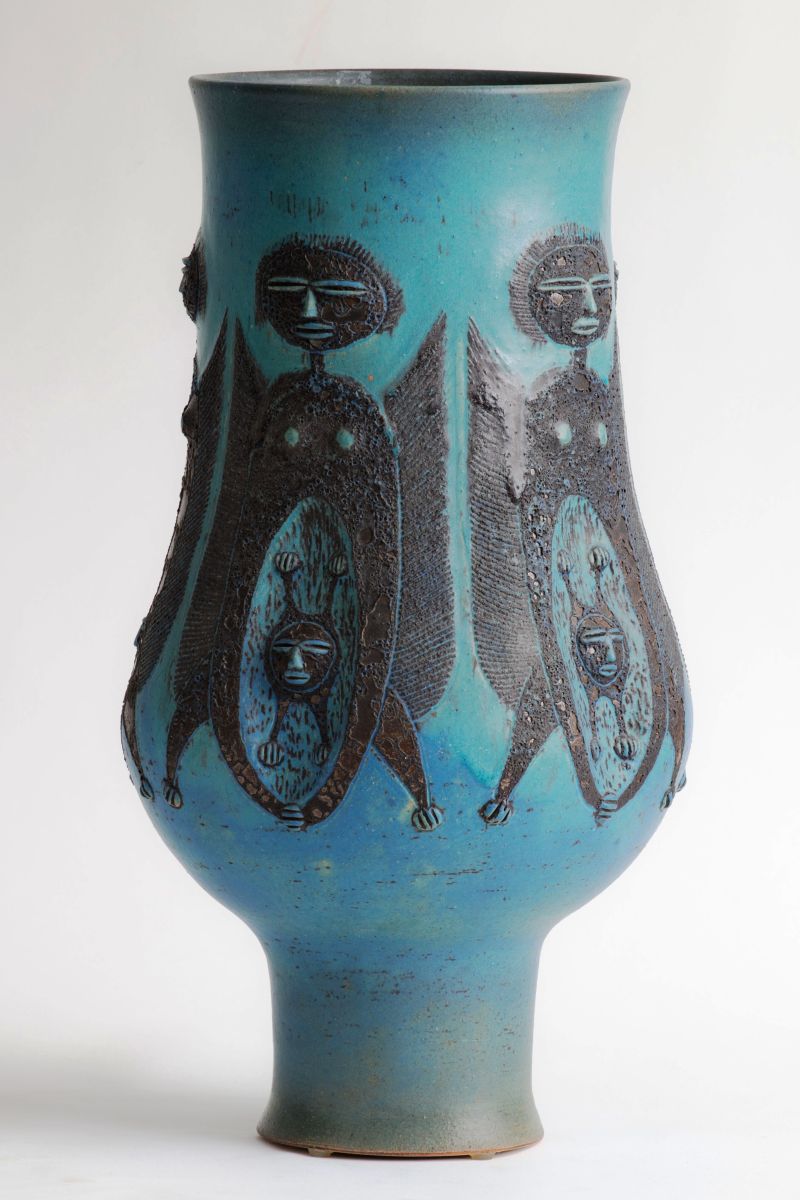 |
|
|
Visiting 'Cool Clay,' a lively exhibit of close to 50 works that have been acquired by the Crocker over the past five years, is a pleasant way to see where clay as an art form is going. The Crocker has one of the larger and better collections of ceramic art, which it collects from around the world, so new pieces added to the collection may suggest trends.
An initial walk through suggests that borrowing from a variety of sources is one of them. In the work of Edwin Scheier, who has five impressive, subtly colored vessels here, each incised with figures, we pick up suggestions of tribal art, Picasso, and cartoons.
The works of Erika Sanada and her husband and San Francisco studio mate, Calvin Ma, look like they could have jumped from the pages of Juxtapoz magazine – cartoony, fantasy figures – Sanada’s of a lithe turquoise beat, Ma’s of a man apparently made of wood and sprouting a propeller atop his head.
And Dirk Staschke 'Soliloquy No.4' from 2017 shows what looks like a 16th century Dutch still life painting of flowers – only Stachke's piece is three dimensional and sculpted amazingly enough of clay.
Yes, 'Cool Clay' does include some quieter examples that fit a contemplative mid-century mood. There’s an untitled platter, Jun Kaneko – simple, with subtle variations in color and texture and a sense of movement as a whoosh of blue glaze emanates from a dark central circle.
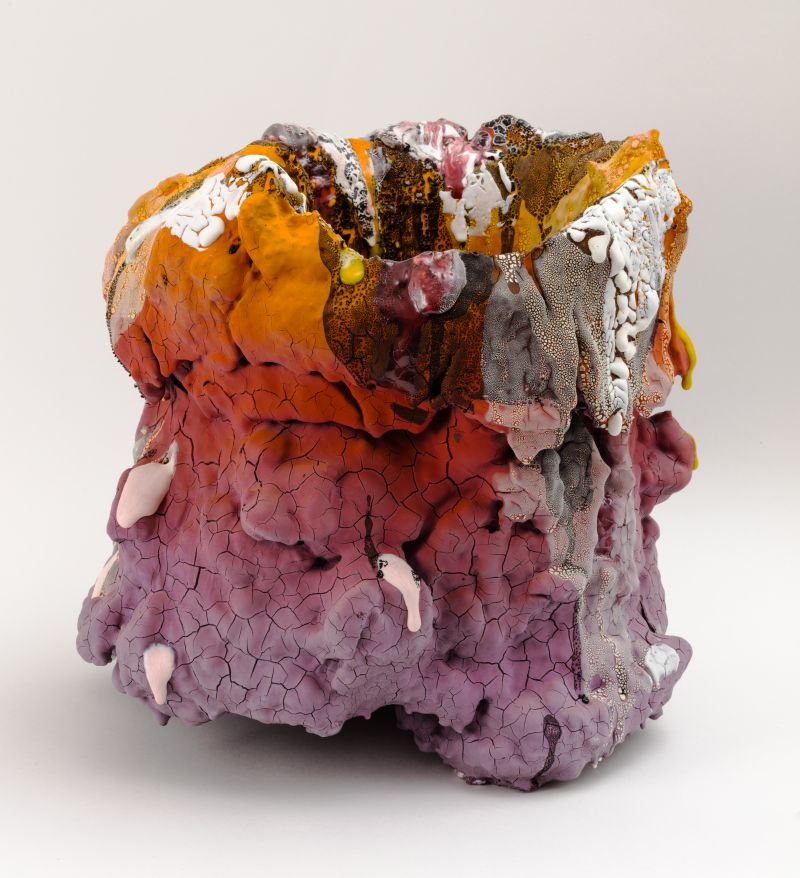 |
|
|
And Mineo Mizuno’s 'Zero,' a simple form with hand-drawn calligraphy, calls to mind a piece of coral and suggests the edge of the sea.
Also suggesting nature are several works by a young artist, Brian Rochefort, great explosions of clay and color, like eruptions.
“Ceramic art really seems to have the playful element,” Hajela says. “If I had to choose one through thread in the whole show, and for ceramic art really, it’s all very playful.”
“I think it’s because [clay] has so much potential to explore imaginative possibilities. It can be something hyper-realistic…or it can be more about glazing and experimentation and color and form, like Brian Rochefort.”
Another trend Hajela identifies in contemporary ceramics is one that has been ongoing since Peter Voulkos turned what had been pots into abstract expressionist forms back in the 1950s.
“There are many different things happening,” Hajela says, “but one of the main trends that you see are artists who are negating the vessel form. You see artists who have made reference to the vessel and the tradition of utilitarian forms of ceramics, but then negated it by making it non-functional.”
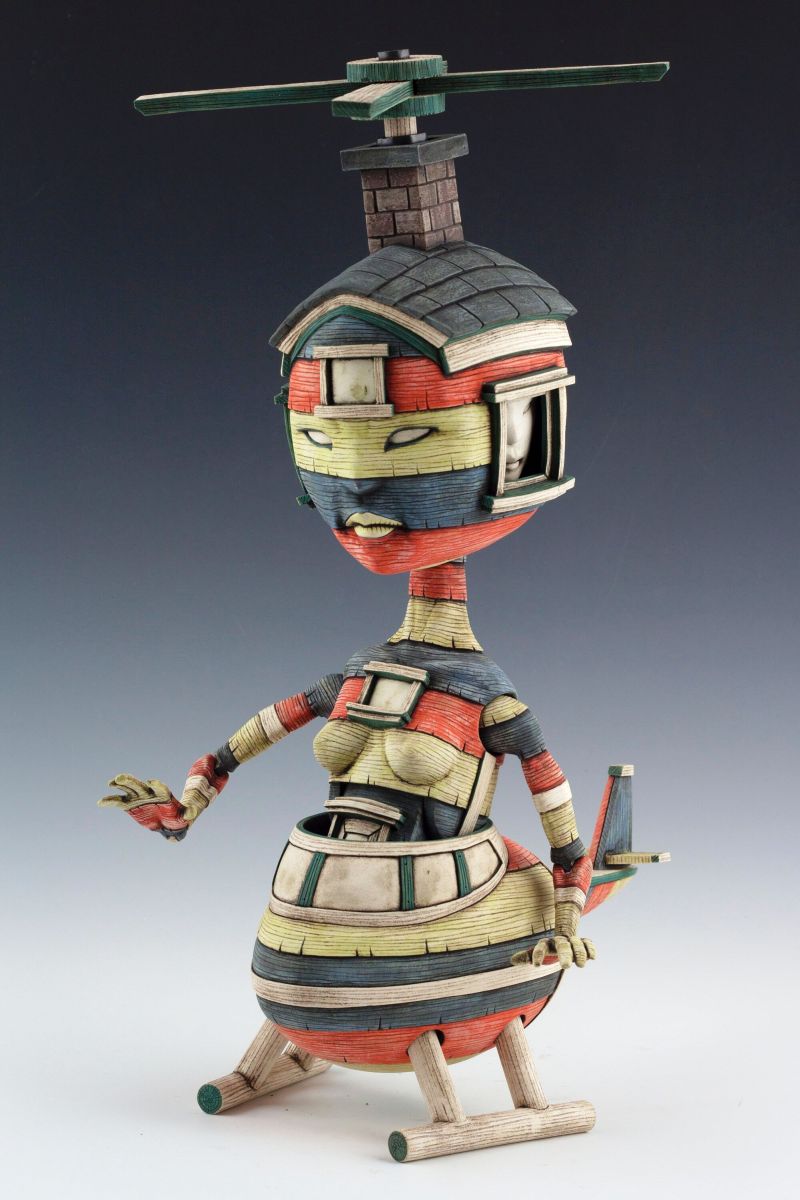 |
|
|
In the Crocker’s main galleries, which are devoted to a superb collection of California art, many ceramic pieces are integrated into that story, shown along paintings and sculptures. These includes works by California artists Voulkos, Robert Arneson, Mizuno, and many others.
But clay deserves its own gallery, too, Hajela says, and not just because the focus of the museum’s clay collection is international, versus regional.
“I think that clay has a kind of interesting relationship with craft over the course of our history. It has been viewed as a crafts medium, and separated out from art with a capital A,” she says.
“Because ceramics has gone into the realm of sculpture now, and is now considered part of art with a capital A, just because of its history it’s important to separate it out and say: Look, there are these many possibilities. It’s such an imaginative medium. It could be craft, but it has the potential to be art as well.”
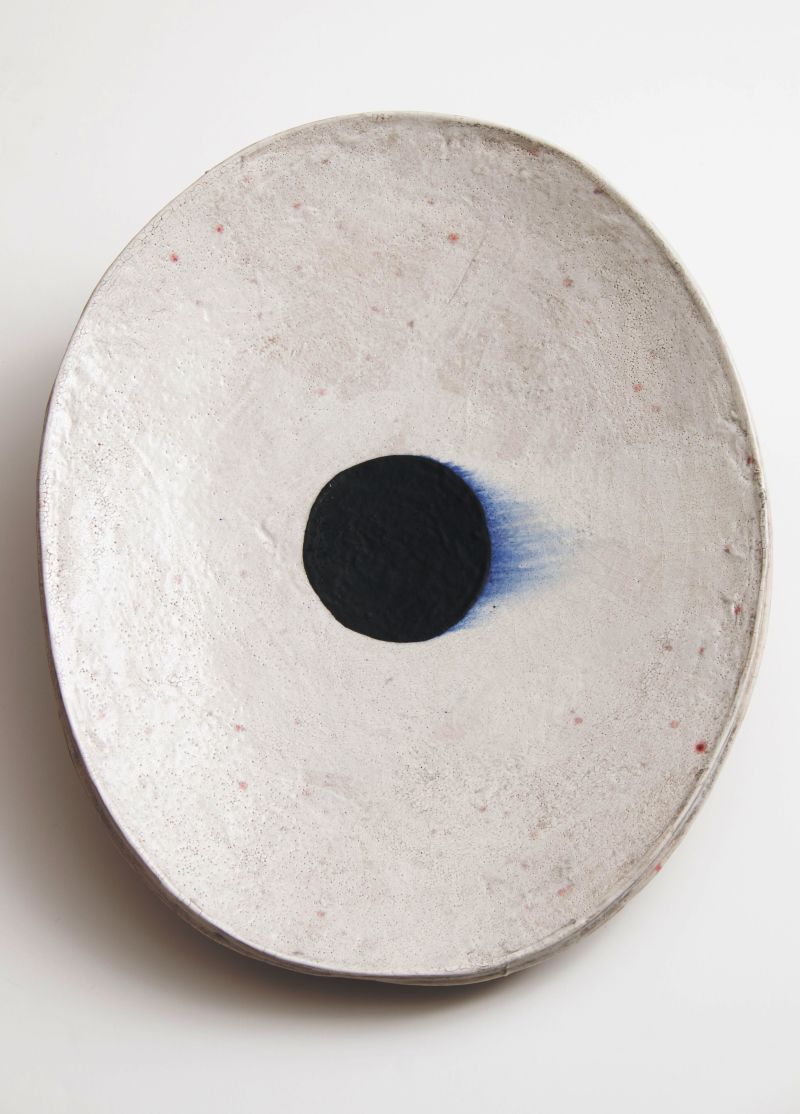 |
|
|
- ‹ previous
- 2 of 677
- next ›



